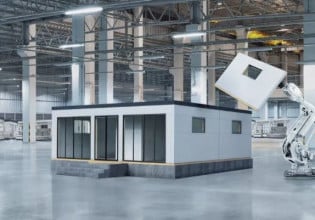Cognex Premiers In-Sight SnAPP Vision Sensor
Cognex’s newest vision sensor offers easy programming and an improved customer experience.
Cognex’s In-Sight SnAPP vision sensor made its debut at this year’s Pack Expo. A long-time leader in machine vision technology for automation and control, the company’s latest sensor reduces typical barriers to entry for engineers and system designers wishing to add vision sensing to their production machines. Cognex says it designed these sensors to be an “onramp” to machine vision by focusing on improving the customer experience and reducing deployment time.
Programming Complexity Stymying Vision Sensor Deployment
Vision sensors, including Cognex’s In-Sight SnAPP, assist automation operations in a variety of ways. Vision sensors can be used for safety applications, quality assurance, placement of components during processing steps (using edge detection routines), recognizing key workpiece attributes, and more. Vision sensors also guide accurate motion control for picking and packing operations, locating products, and directing the machine where to move.
Unfortunately, access to the benefits of vision sensing has been limited by the complex programming required to deploy the devices. Users must either learn a proprietary programming language, develop an often cumbersome “training” routine, or develop a similarly wrought scheme to teach the robot how to detect important features.
In-Sight SnAPP Sensor Advantages
The most striking advantage of the Cognex In-Sight SnAPP sensors is their ease of use. Instead of learning a proprietary software package or programming languages, the In-Sight SnAPP sensors are designed to be run from web interfaces. Any device that can access a web browser can be used to teach the sensor. Simply plug in the sensor and begin training it through a web interface. This alone is a tremendous time saver. A bonus is that the sensors only need a few images for training purposes, meaning that training and teaching time is reduced significantly compared to similar sensors on the market.

Cognex In-Sight SnAPP sensor and web-based interface. Image used courtesy of Cognex
Vision sensors can be used for multiple applications. In particular, Cognex says, vision sensors are one of the best ways to automate and control picking, packing, and quality control operations and routines. Most vision sensors can be programmed to locate objects in any position, as well as the ability to detect fine, subtle, and hidden defects.
Managing these operations efficiently is a great entry point for vision sensor-supported automation. Bin picking for example. When these kinds of operations are automated, humans and human error are eliminated from operations. With years of experience controlling operations and quality with smart vision systems, most manufacturers understand the devices can help machines perform better than humans when it comes to performing rote and highly monotonous tasks with precision, that is when the machine vision system is properly configured.
Another Vision Sensor … So What?
Is the market ready for another vision sensor? It’s open for debate but in deference to the market and its demand for better access to the technology, Cognex found a great opening, turning a current struggle into an opportunity. Plenty of automation systems focus on functionality rather than programmability when they should be focusing on both. Cognex’s latest vision sensor addresses both these challenges which provides specifying engineers with fewer compromises and greater applicational flexibility. It may surprise many in production and manufacturing, but there are still hundreds if not thousands of large, legacy manufacturers that are just getting started implementing advanced digital automation and controls. Because Cognex vision sensors are easier to program they may be a more attractive alternative to existing sensors on the market. Although the technology is not new, for many implementing it properly is. Regardless of the setting or the abilities of facility engineers, eliminating this small barrier to entry means spending fewer hours learning proprietary software or complex programming languages, and more hours spent improving capacity, throughput, and product quality.






